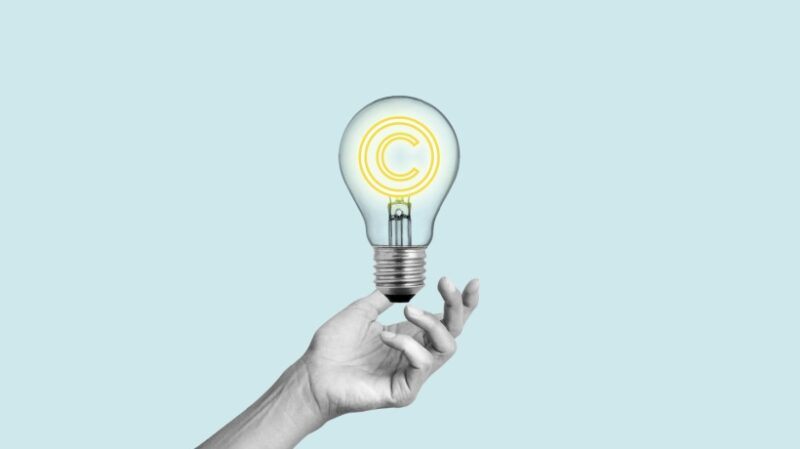

What Is Copyright And Intellectual Property In eLearning?
Copyright and intellectual property are important matters, and if you’re in eLearning, you can’t afford to ignore them. These aren’t just legal terms; they protect your work and ensure you don’t accidentally break the law or violate anyone’s rights. So, let’s dive into them in simple terms, avoiding complicated jargon that may confuse you if you’re new to this.
The Purpose Of Copyright
Copyright is a legal tool that protects the work you’ve created, prohibiting anyone else from using it and claiming it as their own. Whether it’s an instructional video you spent weeks working on or an eBook you crafted, copyright makes sure you have full control over how it’s used. The purpose of copyright is simple: it protects creators like you by giving you exclusive rights over your work. If someone wants to reproduce, distribute, or display it publicly, they need your permission first.
So, what exactly does copyright protect? Everything from text, videos, and images to audio files, software, and even infographics. As long as it’s original work, you can protect it.
Overview Of Intellectual Property
Copyright is just a part of the intellectual property matter. Intellectual property is the umbrella term for anything valuable that you think up and create, such as ideas, designs, inventions, and expressions that are worth protecting. Intellectual property has four main categories: copyright, which we covered; trademarks, like logos, slogans, and brand names; patents, such as a new method for teaching a subject or another innovative approach; and lastly, trade secrets, which can be an eLearning platform or a unique instructional method that you gatekeep and want no one else to know. Now that we’ve covered the basics, let’s explore why copyright and intellectual property matter so much in eLearning.
Why Do We Need Copyright And Intellectual Property Policies For eLearning Content?
1. Protecting One’s Work
Putting hours into creating eLearning content only to see someone else claim it as their own is unfortunate and frustrating. That’s where copyright and intellectual property come in. They protect your original work and make sure no one else takes credit for it. Not only does copyright protect your hard work, but it also shows that you value what you create, and so should everyone. When someone steals your work, they’re not just taking your ideas, they’re disregarding the effort you put into making something valuable. So, copyright and intellectual property in eLearning aren’t optional. It’s how you control what you create, protect your reputation, and ensure your hard work pays off.
2. Encouraging Fair Use
When you respect copyright rules, you’re not just avoiding lawsuits, but you’re also setting the stage for ethical practices in the eLearning world. For example, just because someone’s copyrighted video is perfect for your course doesn’t mean you can use it. This is called fair use. It has boundaries, and when you follow the rules, you encourage others to do the same. You set an example, and instead of using content that doesn’t belong to you, you either create your own or use licensed material legally. This increases quality in the eLearning community as a whole because every course will include carefully crafted materials. Overall, when you respect fair use and only use licensed content, you contribute to a community that values creativity, respect, and professionalism.
3. Safeguarding Monetization
Whether you’re selling courses on a big platform or running your own eLearning business, protecting your intellectual property helps you keep earning from your valuable creations and stops others from stealing your work and, consequently, money. In other words, copyright and intellectual property can guarantee your financial safety. Imagine some random person downloading your materials, for which you’ve worked hard, adding their name to them, and selling your content as their own. When you protect your work, you’re legally stopping others from making a profit off your own creations. Hence, the time, creativity, and effort you pour into your content become the revenue you deserve. You stay in control, keeping your income from eLearning secure and your mind at ease.
4. Building Credibility
Respecting copyright and intellectual property shows your audience, partners, and students that you’re a professional. You’re not just putting together content you found on the internet. No, you’re taking the time to create original, high-quality work. People love working with creators who follow the rules because it reassures them that they’re getting quality content. You wouldn’t trust someone to teach you things if they were using someone else’s copyrighted work without permission, right? When creators use content that is protected by copyright or properly licensed, it builds trust. Your students, business partners, and collaborators will know you’re ethical and feel safe knowing that they aren’t associated with anything illegal.
5. Supporting Innovation
If you create next-level courses, design unique content, or come up with innovative teaching methods, you need to protect your intellectual property. Why? Because when you know your ideas are safe from those who want to copy them, you feel more empowered to try new things. Let’s say you’ve come up with a groundbreaking way to teach something complicated. You dedicate plenty of your time to crafting it, but if you don’t protect it, someone could steal it. However, when your copyright and intellectual property are established, you’re free to experiment, create, and grow without fear of your ideas getting stolen. You can invest more time and resources into perfecting your content, testing new methods, and exploring imaginative ideas knowing you’ve got legal protection.
Conclusion
Your work is valuable. Whether you’re creating a single course or building an entire eLearning business, knowing how copyright and intellectual property work is a crucial step in protecting what you make. So, next time you want to simply borrow an infographic or video you found online or forget to register your own work, remember that copyright and intellectual property are your allies. Respect them, use them, and own your ideas and hard work.